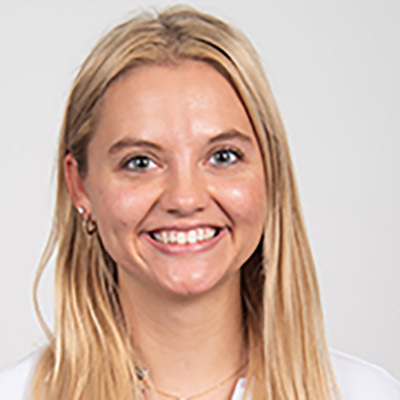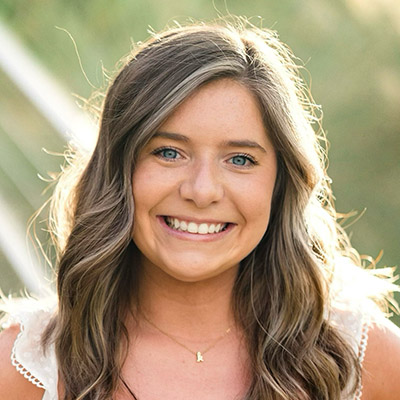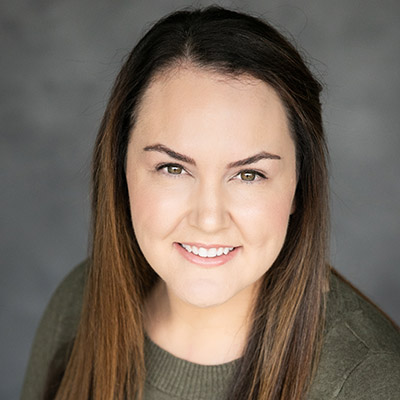Session Details
Other Injury Prevention Topics
SALONS A/B/C/D
2. Identify factors associated with publication after presentation at IFCK conference
3. Learn about contemporary applications of visual field technologies for improving teen road safety
4. Understand successes and limitations in tools for initiating and maintaining effective dialogues with adolescents regarding substance use
5. Describe a unique collaboration between the community and clinicians for injury prevention and health promotion via The Teddy Bear Clinic

Emory University School of Medicine
Pediatric Emergency Medicine Physician
Children's Healthcare of Atlanta
Co-PI/Atlanta IFCK Chapter
maneesha.agarwal@emory.edu
Twitter: @tarhealer

Childhood Injury Prevention Program
Lucile Packard Children's Hospital | Stanford Medicine Children's Health
PhD Student | Stanford University
screspi@stanfordchildrens.org
Rural Adolescent Attitudes and Use of Equestrian Helmets

University of Iowa Carver College of Medicine
brianna-iverson@uiowa.edu
Brianna Iverson, BS
Devin Spolsdoff, MS
Pam Hoogerwerf, BA
Kristel Wetjen, RN, MSN
Shannon Landers, BS
Charles Jennissen, MD
Horses are still common in rural areas including farms and ranches and are used for work-related activities as well as for recreation. Equestrian helmets can help prevent and decrease the severity of head injuries when on or around a horse. Yet, helmets may be underutilized by horseback riders. Our study objective was to evaluate the frequency of equestrian helmet use in rural adolescents, their attitudes with regards to helmets and to identify associated demographic factors.
A convenience sample of 2022 Iowa FFA (formerly Future Farmers of America) Leadership Conference attendees completed an anonymous survey at the University of Iowa Stead Family Children’s Hospital injury prevention booth. Data was compiled and imported into Stata 15.1 (StataCorp, College Station, TX). Descriptive and statistical analyses were performed including bivariate (Chi-square, Fisher’s exact test) and multivariable logistic regression analyses.
1,331 adolescents who were 13-18 years of age participated. One-fourth (26%) of participant’s households owned a horse with those from farms having the highest ownership proportion (37%), p<0.01. Youth from farms were 4.3 times more likely to own a horse than those living in towns. Overall, 45% had ridden a horse in the past year. Females (51%) and those whose families owned a horse (86%) had higher proportions having ridden a horse in the past year. Females were 2.1 times and horse owners 15.6 times more likely to have ridden a horse in the past year than males and non-owners, respectively. Females, those from farms and horse owners also had higher proportions riding horses frequently (daily/monthly). Equestrian helmet use was: 13% always, 10% mostly, 11% sometimes, 17% rarely, 50% never. Females had higher helmet use as compared to males. Helmet importance (rated 1-10) was a median of 6 and mean of 5.8; lower ratings than for dirt bikes or motorcycles. Those who had not ridden or rode infrequently viewed equestrian helmet use as being more important than more frequent riders (p<0.001). Only 22% supported equestrian helmet use laws. Males, non-Hispanic Whites, farm residents and horse owners had lower proportions supporting helmet laws. Respondents who had participated in an activity that required equestrian helmet use had higher percentages that reported wearing helmets, viewed wearing helmets as important, and supported laws mandating helmet use (all p < 0.001); they were also 4 times more likely to wear a helmet than those who had not participated in an activity mandating equestrian helmet use.
One-half of study adolescents never used equestrian helmets when riding horses. However, those who had participated in an activity mandating that they wear helmets had higher helmet use and ratings of helmet importance. Requiring helmet use at training centers, competitions, club events and group rides may help increase general equestrian helmet use. Education and other interventions to help change the safety culture surrounding equestrian helmet use is needed in rural areas.
1. List at least two youth demographic factors associated with higher proportions having ridden a horse in the past year.
2. Describe rural youth equestrian helmet use and the importance youth ascribe to wearing helmets while riding horses.
3. State what effect required helmet use at training centers, competitions, club events and group rides may have on adolescent’s use of and attitudes regarding equestrian helmets.
Abstract to Publication: A 7-year analysis of abstract presentations at Injury Free Coalition for Kids Annual Conference

University of Arkansas for Medical Sciences
Arkansas Children's Hospital
kmelchiors@uams.edu
Kristyn Jeffries, MD, MPH
Kathy Monroe, MD, MSQI
The annual Injury Free Coalition for Kids (IFCK) conference is an important way for injury prevention researchers to disseminate their research. This study sought to identify the publication rate of abstracts accepted to the IFCK conference and assess factors that influence the likelihood of publication.
We identified abstracts accepted to the 2014-2021 annual IFCK conferences. Presentation formats included lightning round poster and oral presentations. Abstracts published in journals were identified by searching the author and abstract title or keyword in PubMed and Google Scholar. The doctorate status of the presenting author, impact factor at time of publication, and the publication in a journal supplement were catalogued. We used descriptive statistics and logistic regression to determine associations with publication.
Of 258 accepted abstracts from 2014-2021 IFCK conferences, 72% were selected for platform presentations and 49% were subsequently published. Over 50% of published abstracts were published in a journal supplement supported by IFCK. The most common journals for the remainder of published abstracts were Pediatrics (n=6, 4.7%), Clinical Pediatrics (n=5, 3.9%) and Pediatric Emergency Care (n=5, 3.9%). Median journal impact factor for all published abstracts was 2.4 (interquartile range [IQR] 1.9-3.4). Platform presentations had almost twofold higher odds of publication compared to poster presentations (odds ratio [OR] 1.9, 95% CI: 1.1, 3.4). Lead authors with doctorate degrees had threefold greater odds of publication than lead authors without doctorate degrees (OR 3.2, 95% CI: 1.9, 5.2). The median time to publication was 10 months (IQR 5-18), excluding those abstracts presented at the 2021 conference.
A high percentage of abstracts accepted for presentation at the IFCK conference are subsequently published, with a large proportion being published in supported journal supplements. This study emphasizes the need for continued support of the journal supplement by IFCK. Increased mentorship, especially for injury prevention researchers without doctorate degrees, should be encouraged to help overcome barriers to publication after presentation at the IFCK conference.
1. To describe the accepted IFCK conference abstracts that are subsequently published
2. To identify factors associated with publication after presentation at IFCK conference
3. To recognize the continued need for mentorship for presenting authors to reach publication
The Impact of UFOV4 and Visual Acuity on Adolescent Visual Response to Safety Critical Events in a Driving Simulator

University of Alabama at Birmingham, TRIP Lab
Kaiden D. Kennedy, BS
Benjamin McManus, PhD
Despina Stavrinos, PhD
Motor Vehicle Collisions (MVCs) are the leading cause of death and injury among adolescents in the US. To recognize safety critical events (SCEs), drivers must not only use their central vision, but also their peripheral vision. When using both central and peripheral vision, cognitive tasks can be successfully performed in a Useful Field of View (UFOV) paradigm. The UFOV task measures processing speed, divided attention, and selective attention. UFOV performance has been linked to crash involvement in older adults and those with various medical conditions, as well as simulated MVCs in young adults. This study examined whether UFOV was a predictive measure of visual recognition of SCEs when combined with Visual Acuity (VA), the current visual screening tool used for obtaining driving licensure in a sample of adolescents.
As part of a larger study examining driving attention, 190 adolescents (Mage=17.12 years, SD=1.98; 53% female) provided UFOV assessment (subtests 1-4), VA measurement, Trails tests A and B, and drove in a high-fidelity driving simulator. Licensed adolescents (n=81) were enrolled within 2 weeks of receiving their driver’s license. Unlicensed adolescents (n=109) had no prior driving experience. During the simulated 7-mile drive, participants encountered five SCEs (e.g., vehicle/pedestrian suddenly nearing driver’s pathway). Visual reaction time and glance length to the SCEs were assessed with eye tracking within the simulator vehicle.
Regressing visual reaction time on licensure status (licensed, unlicensed), gender (male, female), SCE type (vehicle, pedestrian), VA (20/25 or better, 20/30 or poorer), Trails (B – A time difference), UFOV 4 (Selective Attention 2), UFOV 4 by licensure interaction, and UFOV 4 by VA interaction indicated poorer UFOV 4 scores were associated with slower visual reaction time (F = 2.04, p < .01).This effect was moderated by VA, such that only those with VA 20/30 or poorer displayed slower reaction time as a function of poorer UFOV 4 scores (t = 3.30, p < .01). Although licensed participants displayed significantly faster visual reaction times (F = 6.2, p = .01), UFOV 4’s effect on visual reaction time was not dependent upon licensure status.
UFOV selective attention may be predictive of some visual behavior in adolescent drivers, and this appears to depend in part on the adolescent’s VA. Since VA alone has not been directly associated with MVCs or hazard detection in adolescents, further investigation is needed to determine UFOV’s role in adolescent visual behavior while driving. Future research should include adolescents of wider ranging VA scores to examine the relationship between UFOV 4 and VA on visual glance reaction time and to better examine the predictive ability of UFOV in adolescent drivers.
1. The effects of UFOV4 and Visual Acuity on visual reaction time in adolescents.
2. The difference in effectiveness of UFOV testing between adolescents and older adults.
3. Further recommendations in determining fitness to drive for adolescents.
Continuing Conversations about Alcohol and Drugs with Injured Adolescents

Warren Alpert Medical School of Brown University
Director, Injury Prevention Center at Rhode Island Hospital-Hasbro Children's Hospital
mjmello@lifespan.org
Michael J. Mello, MD, MPH
on behalf of the IAMSBIRT Study Investigators
Jermy Aidlen, MD
Janette Baird, PhD
Sara Becker, PhD
Julie Bromberg, MPH
Emily Christison-Lagay, MD
Andrew Kiragu, MD
Karla Lawson, PhD
Lois K. Lee, MD, MPH
Robert Todd Maxson, MD
Isam Nasr, MD
Charles W. Pruitt, MD
Stephanie Ruest, MD, MPH
Kelli Scott, PhD
Anthony Spirito, PhD
Mark Zonfrillo, MD, MSCE
Screening, Brief Intervention and Referral to Treatment (SBIRT) for alcohol or drug (AOD) misuse has been effective in a variety of healthcare settings. The American College of Surgeons Committee on Trauma (ACS-CoT) adopted a requirement for certification as a level one trauma center that mandated universal screening for alcohol misuse and delivery of a brief intervention for those screening positive. Our study objective was to determine if adolescent trauma patients who screened positive for AOD use were directed to and engaged in follow-up AOD conversations after hospital discharge, and if this changed after implementation of a structured SBIRT program.
This study was part of a larger implementation study of SBIRT (IAMSBIRT: NIAAA R01AA025914) with adolescent trauma patients admitted from 2018-2022 to ten level one pediatric trauma centers. The study utilized a stepped-wedge design in which sites implemented the SBIRT program at different time points. A convenience sample of adolescent trauma patients (12-17 years), which oversampled AOD positive adolescents, was enrolled to receive a survey within 30 days of discharge. Adolescents were surveyed about advice they received from trauma staff to have follow-up conversations with their primary care provider (PCP) on AOD following discharge, and whether or not they had acted on that advice. Additionally, electronic health record (EHR) data on all admitted trauma patients were collected to identify those documented as screening positive for AOD, and whether they received indicated brief intervention and referral for continued AOD discussion following discharge.
Adolescent assent and parent consent for study enrollment was obtained on 430 patients (62.6% of approached patients), 6 withdrew and 329 (77.6%) completed the 30-day post discharge patient survey. Of those enrolled before implementation, 16.7% of AOD positive adolescents reported being advised to have follow-up AOD discussions with their PCP. This increased to 21.7%, but not significantly (p=0.22), following implementation of the IAMSBIRT study protocol. AOD positive adolescents referred for other non-PCP AOD counseling was low both before (15.6%) and after (14.6%) IAMSBIRT implementation. Of those referred, 33% at baseline and 30% after IAMSBIRT had accessed AOD counseling at 30 days. EHR data demonstrated increased screening using a validated screening tool (25.5% to 47.7%, p <0.001), increased identification of AOD positive adolescent trauma patients (20.2% to 23.9%, p = 0.02) after IAMSBIRT implementation, but no change (3.1% to 2.0%) in referral to PCP or non-PCP for AOD discussions or counseling services.
Our study found encouraging increases in AOD screening, but no change in referrals for post-discharge AOD discussions or counseling services. ACS-CoT has mandated AOD screening and brief intervention for trauma patients but requiring linkage to continued AOD discussion for those adolescents screening positive may be necessary to improve referral and subsequent AOD discussion practices. Further research to best accomplish the RT part of the SBIRT model is needed.
1. Screening and brief interventions for AOD use is required for admitted patients at ACS level one trauma centers.
2. An implementation strategy can improve AOD screening and BI delivery, but challenges persist for referrals.
3. Additional efforts are needed to continue adolescent AOD discussions after trauma center discharge.
Doctor for a Day: Community Teddy Bear Clinic

Trauma Services
Children's Hospital of Orange County
mferguson@choc.org
Makenzie Ferguson, RN, BSN, CPEN
Carly Hume, MS, CCLS
The purpose of the Teddy Bear Clinic is to use children’s play to educate school aged children on health and safety topics. The clinic takes place at a school where each child receives a teddy bear when they check in. Next, they have one hour to visit various stations with their bear to practice common hospital activities such as vital signs and first aid. The goal is to increase familiarity of the environment and medical tools during hospital or clinic visits. This gives children a sense of mastery and control in an environment they may be unfamiliar with. Other stations are dedicated to safety. Here they learn about disaster preparedness, water and other summer safety topics. Educational resources are given to the students to take home and share with parents.
This program was a partnership between trauma services and the child life department. Child life specialists can develop and deliver developmentally appropriate education on sensitive topics related to trauma injury prevention. Each station was run by nurses, EMT’s or child life specialists. Funding for the bears was secured through a private donor with the help of the hospital foundation. If funding isn’t available, the students can alternatively bring their own stuffed animal from home. Some play medical supplies were purchased by the departments and various expired medical equipment was borrowed from the hospital.
240 students ages 4-11 years old went through the clinic. School leadership described the program as "a joyful, informative, and memorable learning experience.” Developmentally appropriate pre and post surveys are currently being developed to further measure outcomes for future programming.
The utilization of a Teddy Bear Clinic is an effective and engaging method to deliver injury prevention and various health topics to children. The stations can be easily adapted to various populations as well as many different safety education topics. Community partners such as fire departments or police departments can also be included to enrich the learning experience. Limitations included time management to accommodate various ages and engagement at each station as well as difficulty measuring outcomes in very young children.
• Participants will understand the benefits of using a Teddy Bear Clinic to engage young children in safety education
• Participants will be able to verbalize the resources needed to replicate this program to meet the needs of their community and/or injury prevention program
• Participants will be able to describe stakeholders involved in the development of a Teddy Bear Clinic
